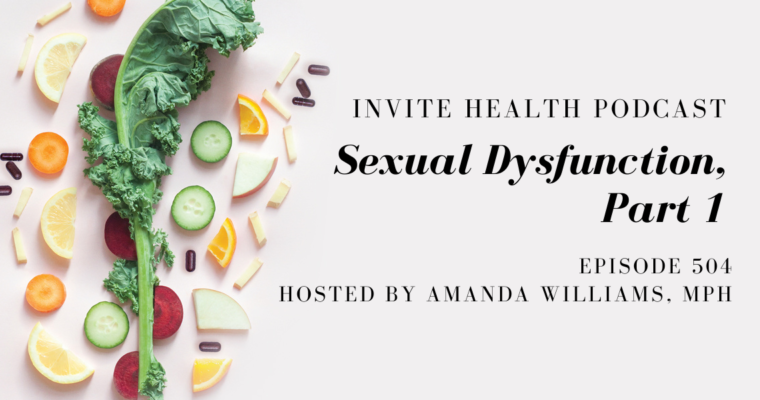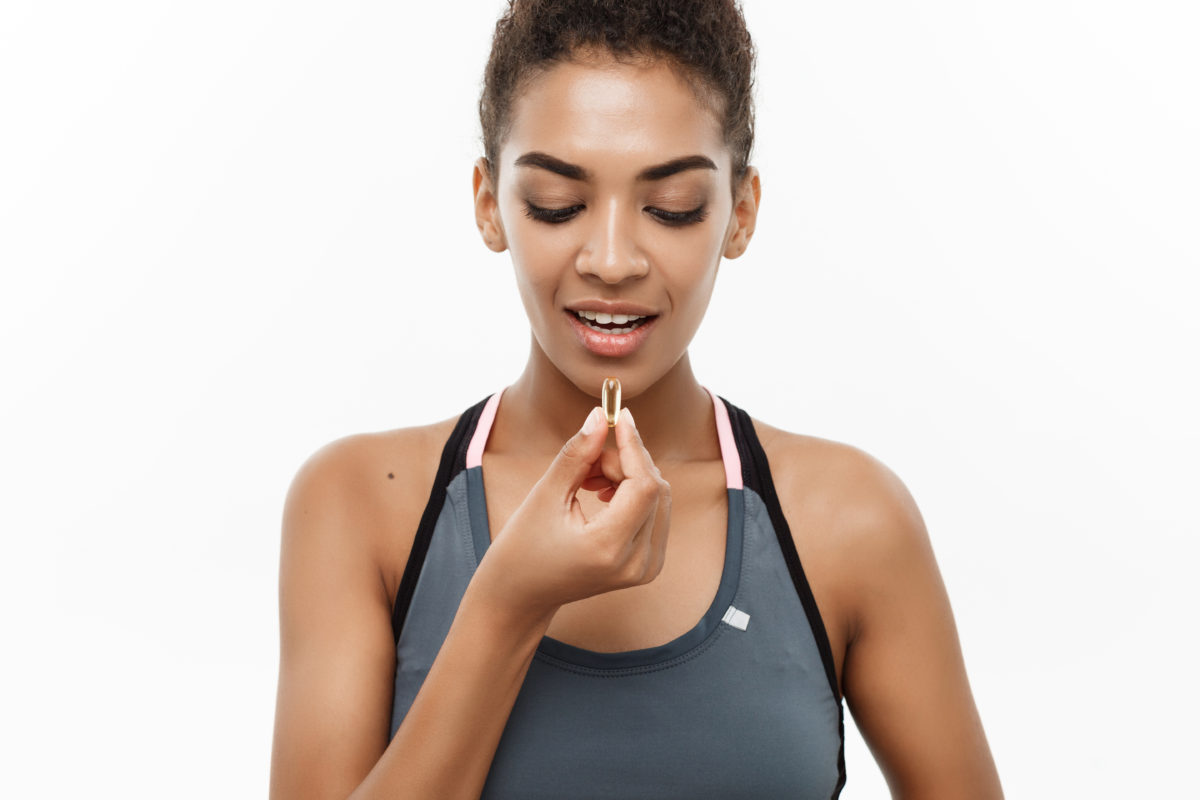Women’s health touches on a wide range of issues from cancer to cosmetics. Women want to stay current with what’s available to prevent and treat conditions as varied as menopause, cancer, spider veins, problems with hair, skin, nails, and anemia.
Menopause
After the age of 40, women may start to notice specific changes before and during their menstrual cycle. During these 10 or more peri-menopausal years, fertility hormones decrease. Progesterone decreases gradually, followed by a sharp estrogen decline in most women when they begin approaching age 50. These normal changes may include longer cycles, scanty flow, skipped periods, changes in mood and body temperature, irritability and sleep troubles. Overall, some women perceive this to be a stressful time, with many body changes.
Some people find unfermented soy food products hard to digest but you don’t have to eat soy to get relief from menopausal symptoms. You can take isolated Soy Isoflavones (Genistein and Daidzein) in supplement form. Studies using isoflavones for menopause show heart and bone protection, relief from menopausal symptoms, and protection from breast and endometrial cancer.
- Black Cohoshis an herb with a long history of use for women’s problems. Studies show that it may help relieve hot flashes, night sweats, and mood changes.†
- L-Theanine, an amino acid derived from the green tea plant, has special properties that increase alpha-waves associated with mental and physical relaxation and a reduction in symptoms of stress and anxiety without creating drowsiness. In combination, these nutrients may relieve the discomfort, frequency and intensity of hot flushes, maintain the health of the skin and sex organs, promote the strength of bones, help control blood fats, and protect sensitive brain tissue.†
Anemia
Because of monthly menstrual cycles, women frequently become anemic and feel tired, listless, light-headed, dizzy, and weak. Stores of precious iron, necessary for the formation of new red blood cells, may become depleted. Iron is crucial for the transport of oxygen from the lungs to the rest of the body. That’s why shortness of breath can also accompany an anemic condition. Women are advised to eat more foods containing iron, such as meat and dark green vegetable but that advice doesn’t seem to be working because between 20-50 percent of the world’s population is iron deficient.
However, there are ways to enhance your ability to increase your red blood cell production –
- Taking a superior source of iron, such as Iron Bisglycinate, that is well absorbed, and therefore doesn’t cause constipation, is the key to proper iron replacement.†
- Groundbreaking research shows that the amino acid Taurine enhances the effect of iron therapy in correcting iron deficiency and anemia. Women treated with both iron and taurine improved their red blood cell count and the hemoglobin content of their blood better than women treated with iron only. Sometimes blood testing for anemia doesn’t show the whole picture. One study shows that women suffering with poor endurance can be low in iron, even if they have enough red blood cells. These women, aged 18-33, when put on an iron supplement had a significant improvement in their endurance during exercise.†
Hair Loss
Hair loss may be traumatic for men, but it’s even worse for a woman to have a receding hairline and thinning hair with an unrestricted view of her naked scalp! DHT or dihydrotestosterone is a potent and troublesome form of the male hormone testosterone. When DHT is released into the hair follicle, it sends a signal to stop hair growth. Researchers believe that decreasing the formation of DHT will in time restore the growth of normal healthy hair. Herbal extracts such as Saw Palmetto, Pygeum Africanum, Stinging Nettle Leaf, and Green Tea; the B vitamins Biotin and Niacinamide; the mineral Zinc, and Beta-sitosterol (a plant compound with a chemical structure similar to that of cholesterol), are able to simultaneously improve hair health and block DHT without risk of side effects.†
Healthy circulation to the scalp is essential in order for vital nutrients to be absorbed into the roots of the hair, as well as to support hair follicle activity.
Varicose & Spider Veins
As many as 50% of all American women suffer from some form of vein disorder. By age 50, as many as 41% of women will suffer from unsightly-abnormal leg veins. Varicose veins are visible and palpable swellings above the surface of the skin. They are discolored blue or dark purple cords that twist and bulge mostly on the back or the calf and inside of the leg. They can be achy and painful, which worsens with standing.†
Proper blood flow and circulatory function is a crucial aspect of maintaining your overall health throughout life. Your vascular system is made up of many veins, arteries and other blood vessels that deliver blood to every cell and vital organ in the body. When these pathways are obstructed or damaged, your organs suffer because they aren’t getting the fuel they need for your body to work properly.
Spider veins are much smaller vein abnormalities. They are red or blue and much closer to the surface of the skin than varicose veins. They are called spider veins because they resemble a spider’s web of intricate tracings on the skin that can appear on the face or nose. Abnormal veins are created by increased pressure to the venous system from excess weight, pregnancy, and constipation. Left untreated, varicose veins can lead to blood clots (phlebitis) and leg ulcers (breaks in the skin).
Research shows that various nutrients can increase the strength and elasticity of the venous system and help prevent and treat vein abnormalities –
- Ester-C and Bioflavonoids are powerful antioxidants that are necessary building blocks for blood vessels walls. They maintain and increase the strength, elasticity, and integrity of blood vessels.†
- Silica improves and optimizes connective tissue strength, integrity, elasticity, and healing.†
- Bilberry, a relative of the blueberry, contains anthocyanidins that are beneficial in treating varicose veins. Bilberry is recommended in Europe to pregnant women for varicose veins and hemorrhoids.†
- Horse Chestnut has an active ingredient called aescin that reduces inflammation and tones up vein walls. This enhances blood flow back to the heart allowing no stagnation.†
Hair, Skin & Nails
Hair, skin, and nail health are external signs of inward health – or disease. To keep them healthy a variety of nutrients have been successfully researched in nutraceutical and cosmeceutical science –
- MSM is a safe and natural form of organic sulfonyl sulfur found in all living organisms. It is normally present in high amounts in dark green vegetables, milk, seafood, and some grains. Sulfur is a powerful antioxidant and required by the body to make healthy collagen and keratin, which are essential for healthy hair, skin and nails. MSM and its related compounds are the source of over 80% of the sulfur found in all life forms. MSM is volatile and is easily lost during cooking, drying, smoking, pickling, and long-term storage. MSM supplementation is an effective bioactive way of obtaining it.†
- Silica improves and optimizes connective tissue strength, integrity, elasticity, and healing. Silica supplies nutrients essential to create blood vessel walls and helps poorly healing wounds.†
- L-Lysine assists normal immune function, helps the body’s absorption of calcium, and is a building block of collagen and elastin – proteins that provide strength and elasticity to skin and other tissue. A 1999 study found that 90 percent of women with thinning hair were deficient in the amino acid lysine and iron.†
- Vitamin C is necessary for the production of collagen. Vitamin C deficiency can weaken the collagen structure of the skin.†
Questions for the doctor about Women’s Health? Leave them right here in the comments to join our conversation!



